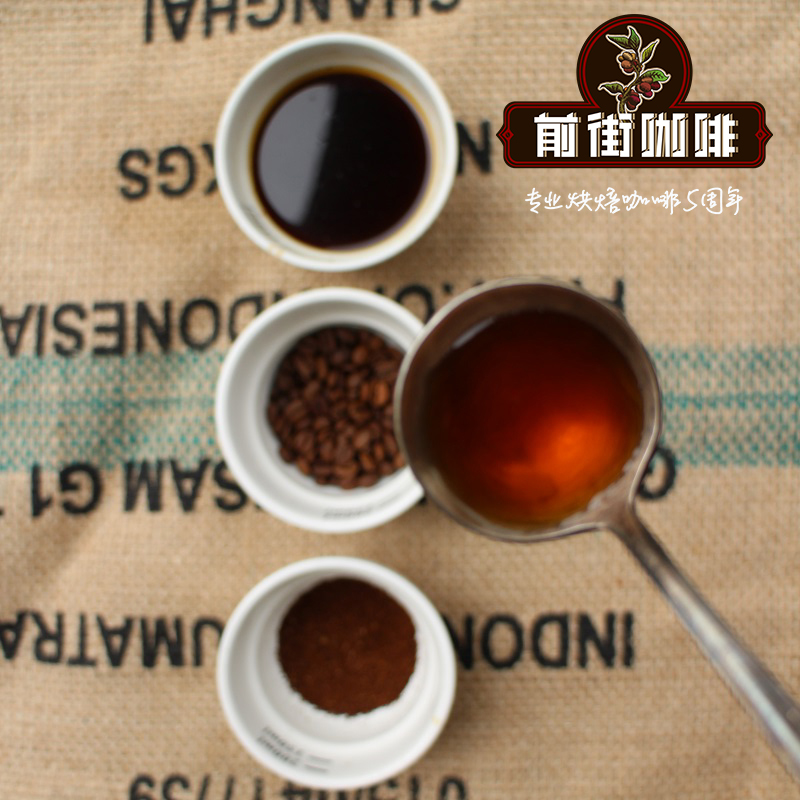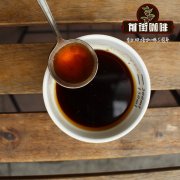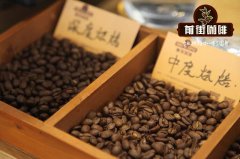What are the common ways to handle raw coffee beans? What is the difference between solarization and washing? Coffee-producing country

Professional coffee knowledge exchange more coffee bean information please follow the coffee workshop (Wechat official account cafe_style)
What are the common ways to handle raw coffee beans? What is the difference between solarization and washing? What is the grading system of raw beans in large coffee-producing countries?
1. Grading: the seeds are taken out and then screened and graded. Guatemala, Costa Rica and other countries are rated according to the planting height, more than 4500 feet above sea level is the highest "extremely hard bean" (SHB). Colombia, Kenya and New Guinea are graded by particle size, with larger and higher grades (with the exception of Kenyan beans). In addition, some producing countries are divided into levels 1 to 5 according to the ratio of defects and the size of coffee beans. The higher the series, the more flaws. It is worth mentioning that there is no inevitable relationship between the size and quality of coffee beans. Yemeni mocha appears to be malnourished, but it has a strong fruity aroma. There is a different kind of "Peaberry" in the grading process that is worth introducing. Normally, each coffee fruit contains two flat seeds, but 5% to 10% of the fruits contain only one seed and have a lovely oval shape. the industry believes that this kind of round beans absorb the nutrients of the two seeds alone, and the flavor is stronger than flat beans, so some producing countries especially pick out small round beans to sell separately. Adzuki beans have recently become a hot item in the American boutique coffee industry.
Coffee grading is usually based on defect rate, bean size, altitude, raw bean density, treatment standards, and so on.
Due to historical reasons, trade interests, climate and topography and other factors, each country's producing areas can not be evaluated and classified according to a unified standard or simply on the basis of altitude. Nor can we compare a certain level of one country with that of another country.
The 12 main countries of origin of coffee, different classification and classification standards:
NO.1 Brazil
Brazil Santos NY.2 FC
Country + producing area (port) + graded name + cup test quality
-grading according to defect rate
two。 Transport: raw beans are properly treated and graded, and can not be exported in a hurry. Experienced coffee farmers will let raw beans "rest" in the warehouse for a month or two, so that the humidity of raw beans can be adjusted to about 10% to 12% before release, because the water content of raw beans is in this range, the quality is the most stable, beyond or below this percentage, raw beans are not easy to survive for a long time.
3. Treatment: the coffee we drink is a drink made by roasting coffee seeds. How to take out the seeds of coffee fruit, this process is called "processing", which can be divided into three kinds: washing method, sun washing method and semi-washing method. The flavor of coffee is deeply affected by the way of treatment. generally speaking, the coffee washed by water has a bright and clean taste and a strong sour taste, but the consistency is slightly lower. The flavor of the solarization method is numerous and miscellaneous, with the taste of the sun, the fruit flavor is very strong, and the consistency is better than that of washing, but the bean appearance is not good. As for the semi-washing rule, it has the characteristics of both the first two ways. At present, the most widely used method is washing.
NO.2 Colombia
-graded according to the size of legumes
Grade Grade
Supamo SC-18 Supremo Sc-18
Supamo SC-17/18 Supremo Sc-17/18
Select the European standard 10% Excelso EP10%
Select high-quality Excelso UGQ
NO.3 Guatemala
-classified by altitude
Grade Quality altitude Altitude
SHB extremely hard beans Strictly Hard Bean (SHB) 1600 / 1700 metres
Excellent hard bean Fancy Hard Bean 1500 / 1600 metres
Hard bean Hard Bean (HB) 1200 / 1400 metres
Semi-hard bean Semi Hard Bean (SH) 1100 / 1200 metres
Extra high quality water washed bean Extra Prime (EP) 900 / 1100 metres
High quality washed beans Prime Washed 600 / 900metres
Special quality water washed beans Extra Good Washed 700,850metres
Good quality water washed beans Good Washed 700metres
Classification according to defect rate
American standard USP
US preparation
European standard EP
Euro preparation
The best standard GP
Gourmet preparation
Many countries have USP, EP and GP standards, and USP\ EP is relatively more common. European and American standards are based on the specific requirements for the defects or items of raw beans. Generally speaking, the EP standard is higher than the USP standard.
The meaning and rules of the name of raw coffee beans in Guatemala:
Guatemala SHB EP Huehuetenango
Country + altitude level + grading name + producing area
NO.4 Costa Rica
-grading by defect
American standard USP US Preparation
European standard EP European Preparation
-graded by density
SHB extremely hard bean Strictly hard bean from 1200-1650 m
HB hard bean Hard bean from 800m-1100m
The meaning and rules of the name of Costa Rican coffee raw bean:
Costa Rica Tarrazu SHB EP Red Honey
Country + producing area + graded name + treatment method
NO. 5 Ethiopia
-grading according to defect rate
Grade Grade defect score Defects
1 0-3
2 4-12
3 13-25
4 25-45
5 46-100
6 101-153
The meaning and rules of the name of raw coffee beans in Ethiopia:
Ethiopia Yirgacheffee G5
Country + producing area + graded name
UGQ=Usual Good Quality
NO. 6 Kenya
-washing
Level details
PB Doudou Peaberries
AA sieve: 17, 18 mesh = 7.2mm
AB sieve: 15,16 mesh = 6.6mm
C screen: 14, 15 mesh
E elephant bean Elephant
Coffee beans screened out during processing are usually defective and are called "ears". This category also contains some large round beans.
Light beans screened by TT from AA and AB grades
T is less than TT, many fragments. It is a light bean screened by airflow from Class C.
UG unrated: none of the beans meet any of the official criteria
-in the sun
Mitchell 39% buni
MH
ML
The meaning and rules of the classic name of Kenyan raw bean:
Kenya AA FAQ
Country + graded name + cup test quality
10 cup test grades in Kenya:
Fine,Good, Fairto Good, Fairto Average Quality (FAQ), Fair,Poor to Fair, Finally Poor
Among them, FAQ is the most common.
NO.7 Tanzania
-classified by altitude
Level details
AA at least 90% 18 mesh
8-10% 17 mesh at most
Up to 2% 15 mesh
An at least 90% 15bat 6 mesh
Up to 2% 14 mesh
B at least 90% 15bat 6 mesh
C at least 90% 14 mesh
Up to 10% 13 mesh
PB at least 90% 14 mesh
Up to 5% floating beans
AF at least 90% 17 mesh
No more than 8-10% 15 stroke 6 mesh
Up to 2% 14 mesh
TT at least 90% 15x6 mesh
Up to 10% 14 mesh
E at least 90% 18 mesh
At most 10% less than 18 mesh
Nothing less than 15 mesh
-grading according to defect rate
American standard USP
US preparation
European standard EP
Euro preparation
The best standard GP
Gourmet preparation
NO.8 Indonesia
-grading according to defect rate
Grade Grade standard
Total defects of G1 Grade 1 are less than 11
G2 Grade 2 total defects are greater than 12 and less than 25
G3 Grade 3 total defects are greater than 26 and less than 44
G4a Grade 4a total defects are greater than 45 and less than 60
G4B Grade 4b total defects are greater than 61 and less than 80
G5 Grade 5 total defects are greater than 81 and less than 150
G6 Grade 6 total defects greater than 151and less than 225th
-the commonly used abbreviations in the export of raw coffee beans in Indonesia are:
Coffee category:
R=Robusta Robusta, A=Arabica Arabica
Handling method:
WP=WetProcessed wet shelling method
DP=DryProcessed dry treatment / solarization
AP= AfterPolished polishing (polishing and removing silver skin)
Manual selection and classification of defective beans:
D _ hand P (second hand selection, Double Picked)
TCMP (three hand selections, Triple pick)
Robusta
Washing Robusta is divided into:
EK1 (Dutch: Eerst Kwaliteit Elementary)
GB (Dutch: Gewone Bereiding minimalist standard)
OIB (Dutch: Oost Indische Bereiding East Indian Standard)
WIB (Dutch: West Indische Bereiding West Indian Standard)
The meaning and rules of the name of raw coffee beans in Indonesia:
Indonesia WIB
Indonesia G1
Country + graded name
WIB is the most common and the highest standard.
NO.9 Vietnam
-graded according to the size of legumes
Grade Grade legume size Screen size
G2 standard, no polishing
G2 standard, unpolished
90% SC13+
G2 standard, polished
G2 standard, polished
90% SC13+
G1 Sc-16 polishing
G1 Sc-16 polished
90% SC16+
G1 Sc-18 polishing
G1 Sc-18 polished
90% SC18+
The meaning and rules of the name of Vietnamese coffee raw bean:
Vietnam G2 Standard Polished
Country + graded name
NO.10 Papua New Guinea
-grading by defect
Grade Grade legume size Screen Size
AA > 18
A 17
AB > 16 (50%)
> 17 (50%)
B > 16
C > 15
PB 11-14s
X mixed
E > 19
PSC > 15mm
Y1 mixed
Y2 mixed
T mixed
(for Arabica only)
The meaning and rules of the name of raw coffee beans in Papua New Guinea:
PNG Plantation Y
Country + planting type + grading name
In Papua New Guinea
Plantation (plantation) and Large Estates (large manor) account for 25% of the national output.
Small and medium-sized farms (Holdings or Blocks) with a size of 10-20 hectares account for 10% of the output.
In PNG, there are 76 registered plantations and estates.
NO. 11 El Salvador
-classified by altitude
Central standard Central Standard CS 500900 meters
Highland growth High Grown HG 900-1200 meters
Extremely high altitude growth Strictly High Grown SHG > 1200 meters
-grading according to defect rate
American standard USP
US preparation
European standard EPEuro preparation
The meaning and rules of the name of raw coffee beans in El Salvador:
El Salvator SHG EP
Country + graded name + defect standard
NO. 12 Honduras
-classified by altitude
SHG extremely high altitude growth Strictly High Grown Over 1500 m
HG Highland growth High Grown from 1000 to 1500 m
CS central standard Central Standard Under 1000 m
-grading according to defect rate
American standard USP
US preparation
European standard EPEuro preparation
The meaning and rules of the name of coffee raw bean in Honduras:
Honduras SHG EP
Country + altitude level + defect standard
How to wash raw beans?
The so-called washing method means that the coffee fruit is picked immediately when it turns red, the hard peel is removed by machine, the sticky berries are exposed, and then thrown into the pool to ferment. In about a day or two, the bacteria will eat most of the pulp attached to the seeds. The whole fermentation process needs to be monitored by veterans. If it goes too far, it will destroy the quality of coffee beans. After the berries are removed by fermentation, rinse the residual pulp attached to the seeds with clean water. At this time, the seeds have been taken out, and then the drying process, it is best to lay the ground for the sun to dry, the flavor is better, but if it rains, it can also be dried by machine, but the temperature should be controlled. Dry and then polish. Generally speaking, washed beans are bluish green, beautiful, and have a clear and bright sour taste. Guatemalan, Colombian, Blue Mountain, Kona, Kenya, Java and Panama coffee are all washed beans. Water washing is adopted in Latin America except Brazil.
The rule of solarization is to take red fruits to dry directly in the forced peeling and shelling. In this way, beans are often defective and not very beautiful. The appearance of the common foreign body or stone bean appearance of the sun-dried beans is more incomplete, the flavor of the beans treated by this method is more complex, with the taste of the sun, the fruit flavor is very strong, and the consistency is better than the washing method, but the bean phase is not good. General Brazilian beans as well as Manning and mocha are typical sun-treated beans.
Let's talk about late harvest (natural solarization). This method is the oldest way to get seeds, and it is easier than washing. Wash the fruit and pick it when it turns red, ignore the natural sun rule, continue to make the fruit purple and black, and finally fall off on its own, then spread the fruit in the sun for a few weeks, and then remove the seeds naturally after the pulp is dry. then use machine or manual grinding to remove the stiff pulp to remove the seed. The focus of late harvest is to let the seeds fully absorb the aroma and sweetness of the pulp, and then after exposure, the flavor is more complex than water-washed beans, and the consistency is better. Yemeni mocha, Ethiopian Hara, and some Brazilian manor beans all fall under this method. Finally, the semi-washing method. The first step is the same as washing. The fruit is picked when it turns red, but it is not thrown into the fermentation pool. Instead, the peel is removed by a machine, the berries are spread on the ground, dried and then moistened, and the dried flesh is ground with a special machine to remove the seeds. Most of Mantlin in Indonesia adopts semi-washing method. Brazil has also begun to use semi-washing in recent years, which is the only one in the world that has both sun exposure. The country of production of these three treatments: water washing and semi-washing.
Important Notice :
前街咖啡 FrontStreet Coffee has moved to new addredd:
FrontStreet Coffee Address: 315,Donghua East Road,GuangZhou
Tel:020 38364473
- Prev

The handling and grading system of raw coffee beans? How many kinds of raw beans are classified? How about coffee and raw beans?
Professional coffee knowledge exchange more coffee bean information please follow the coffee workshop (Wechat official account cafe_style) coffee raw bean handling and grading system? How many kinds of raw beans are classified? How to store raw coffee beans? When the coffee beans are harvested and treated layer by layer, they are properly dried and stored in a warehouse containing sheepskin for about 24 months, and fresh batches are obtained in the current season.
- Next

Delicious coffee beans | Hawaiian Kona coffee flavor characteristics _ Hawaiian kona coffee price
Professional coffee knowledge exchange more coffee bean information please follow the coffee workshop (Wechat official account cafe_style) about Hawaii Kona Coffee-Kona, coffee drinkers have heard of his acidic and acid-rich characteristics, but after actually staying in Hawaii for a period of time, I found that the term Kona can only represent the quality and taste of coffee beans produced in the state of Hawaii
Related
- Detailed explanation of Jadeite planting Land in Panamanian Jadeite Manor introduction to the grading system of Jadeite competitive bidding, Red bid, Green bid and Rose Summer
- Story of Coffee planting in Brenka region of Costa Rica Stonehenge Manor anaerobic heavy honey treatment of flavor mouth
- What's on the barrel of Blue Mountain Coffee beans?
- Can American coffee also pull flowers? How to use hot American style to pull out a good-looking pattern?
- Can you make a cold extract with coffee beans? What is the right proportion for cold-extracted coffee formula?
- Indonesian PWN Gold Mandrine Coffee Origin Features Flavor How to Chong? Mandolin coffee is American.
- A brief introduction to the flavor characteristics of Brazilian yellow bourbon coffee beans
- What is the effect of different water quality on the flavor of cold-extracted coffee? What kind of water is best for brewing coffee?
- Why do you think of Rose Summer whenever you mention Panamanian coffee?
- Introduction to the characteristics of authentic blue mountain coffee bean producing areas? What is the CIB Coffee Authority in Jamaica?

